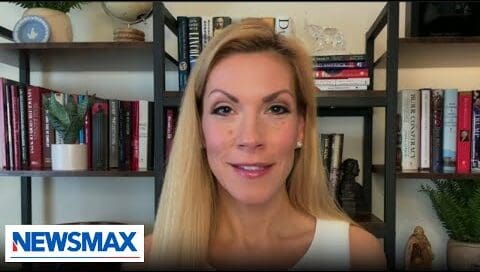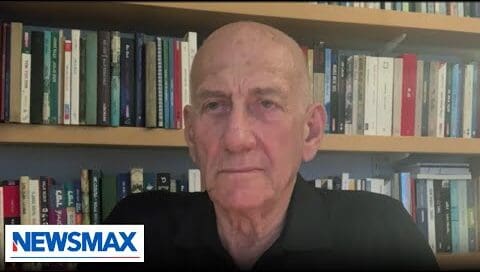

An Interview with Matt Ridley
Matt Ridley is a journalist, science writer and businessman who sat for nine years in the UK’s House of Lords. He’s also one of the leading authorities on the lab leak theory. Last year, he and Alina Chan published ‘Viral: The Search for the Origin of COVID-19’. I interviewed him via email.
In the infamous ‘Lancet letter’, Calisher et al. referred to “conspiracy theories suggesting that COVID-19 does not have a natural origin”. What would you say to someone who believes the lab leak is a “conspiracy theory”?
By definition, an accident in a laboratory is not a conspiracy. The Calisher et al. paper confused two possibilities: a laboratory accident and a deliberate release of a bioweapon. The second is a conspiracy theory and implausible, the first is neither, but by conflating the two the paper persuaded the media to treat both as conspiracy theories for more than a year, while the trail went cold, which suited the Chinese authorities. Charles Calisher himself has since said an accident is not impossible: “I do not see how anyone could definitively state that the virus could not possibly have come from that lab.” The paper, we now know because of FOIA-ed emails, was orchestrated by Peter Daszak, a close collaborator of the Wuhan Institute of Virology, and he said in those emails that he did not want his role in organising the paper to become known. Dr Daszak also declared no interests, something the Lancet eventually corrected more than a year later with a lengthy declaration of his interests.
On 23rd June, you and Alina Chan published an article in UnHerd titled ‘What happened to the lab-leak hypothesis?’ You say regarding your book Viral, “We concluded that it was impossible to be sure yet, but two theories were plausible: spillover from an animal to a person at a market, or an accident in a laboratory or during a research field trip.” Do you regard these two theories as equally plausible, or is one more plausible than the other?
Alina and I don’t like putting numbers on this because there remains a lot of what Mervyn King and John Kay call radical uncertainty, or unknown unknowns: information we would need to have before being able to narrow the odds. As we say, we think only two possibilities are plausible. We both think that of the two, the lab leak is now more likely than the natural spillover because of the weight of circumstantial evidence for one and the dearth of it for the other. But of direct, smoking-gun evidence: there is none for either. We both started out with a more balanced view, indeed I thought at first that a lab leak could be ruled out, because a couple of scientists told me so and I did not check their arguments carefully enough. I soon found that their arguments were flimsy at best.
Are there any facts that are particularly hard for the lab leak theory to explain? Are there any that are particularly hard for the natural spillover theory to explain?
Good questions. The lab leak cannot easily explain why there was a cluster of early cases in a market where live animals were on sale, rather than (say) in a theatre or train station. But this market was a huge, crowded, poorly ventilated space so it would be a natural spot for a superspreader event, and there is a hint that illegal mahjong gambling clubs on the first floor of the market might have played a role in spreading the disease, though this is still speculative. The natural spillover theory cannot easily explain why no animals in the market tested positive, why no infected animals were found anywhere else, why the market cluster was not focused on any particular stalls and why no antibodies were found in market traders – all things that were found in the case of SARS in 2003.
On 27th February, the New York Times published an article titled ‘New Research Points to Wuhan Market as Pandemic Origin’. How persuasive do you find the research cited in that article?
This research, by Michael Worobey and colleagues, claimed to find “dispositive” – i.e., case-closing – evidence that the outbreak began in the market. But the paper has not been peer reviewed and published yet (it was a “preprint”), it shows significant errors of data handling (having extracted location information from a low-resolution analogue plan with errors in it) and having ignored blatant problems with “ascertainment bias”. That is to say, the reason that many early cases were connected to the market was partly because the diagnostic criteria for covid in the early days included whether the person had been to the market: a circular argument. In any case, it had previously been the consensus that dispositive evidence would have to include infected animals in the market, of which there are none. A preprint from the head of Beijing’s Centers for Disease Control came to the opposite conclusion: that the market was a place where the outbreak was amplified, but not where it started. Since then a new peer reviewed paper has just been published by Virginie Courtier and Francisco Ribera, which also comes to this conclusion: the pattern of positive samples in the market (from counter-tops, sewage etc) does not suggest any one stall was central to the outbreak and all samples but one are of a single strain of the virus. It’s clear the New York Times made a mistake in accepting a piece of premature PR spin.
In your recent UnHerd article, you and your co-author mention that you were snubbed by various media outlets and learned societies. Why are ‘elites’, for want of a better term, so reluctant to discuss the lab leak theory?
Because it is against their interests. Scientists do not want to admit that mistakes might have been made by fellow scientists, lest it lead to scepticism of biotechnology, mistrust of science and more regulation of virus experiments. (I share these concerns, but think refusal to be open minded will do even more harm to the reputation of science.) Environmentalists want this episode to be a cautionary tale about rainforest destruction even though southern China is rapidly reforesting. Scientific journals are partly dependent on Chinese funding so are wary of saying anything that might annoy Chinese colleagues. Learned societies are keen on academic collaboration with China. Harvard Medical School was negotiating a huge donation from a massive Chinese property firm at the time this story was breaking, for example. They would not have needed much if any prompting to be ultra-cautious in what they said. And journalists are simply unable to work out how to do proper reporting inside a totalitarian dictatorship, as well as being transfixed by the Trump factor. They were horrified by the possibility that President Trump might have been right about something. Thus all these groups have plenty of incentives to indulge in motivated reasoning, allowing their prejudices to cloud their analysis.
Various scientists have called for an independent investigation into the origin of COVID-19. Aside from what’s already known, what evidence would that investigation need to consider? And how likely is it to settle the debate?
There’s a few basic facts that have not yet been established and which could be very helpful. First, what were the locations and professions of the first people to get sick? We know a little bit about roughly half of the December 2019 cases in Wuhan. But it would be immensely helpful to know everything we can about them all. The US State Department has said that three employees of the Wuhan Institute of Virology fell sick in November 2019 and were treated in hospital for covid-like symptoms. Is this true? If so, which labs did they work in? Second, what viruses was the lab working on? They have published parts of the genomes of most of the viruses they collected before 2016, but even here there were omissions, such as nine viruses collected in 2013 and 2015 and sequenced in 2018 that turned out to be close cousins of SARS-CoV-2. As for the viruses collected after 2016, there is almost a complete blank. This information probably resides in a database that was taken offline at 2am on 12 September 2019. Why? And why has it not since been opened to the world? That would be the quickest way to exonerate the lab, after all. Third, we still need more information about the animals tested by the Chinese authorities in the search for infected hosts. Which farms, markets and wildlife reservoirs were searched? Fourth, US scientists who collaborated with the Wuhan scientists could share far more detail of their collaboration: what information we have has emerged through leaks, rather than being volunteered. So not all the data we need is in China. There is every reason to think a proper inquiry could get hold of some of these details, even without the cooperation of the Chinese government.
As to whether it could settle the debate, the discovery of a virus that is ancestral to all covid strains in an infected racoon dog or bamboo rat that was sold in the market by somebody who also fell sick with the same strain: well, that would be case closed. So would an entry in a lab log book detailing an experiment in which a virus ancestral to all covid strains was being sequenced or manipulated in the lab. A whistleblower with good information could yet come forward.







